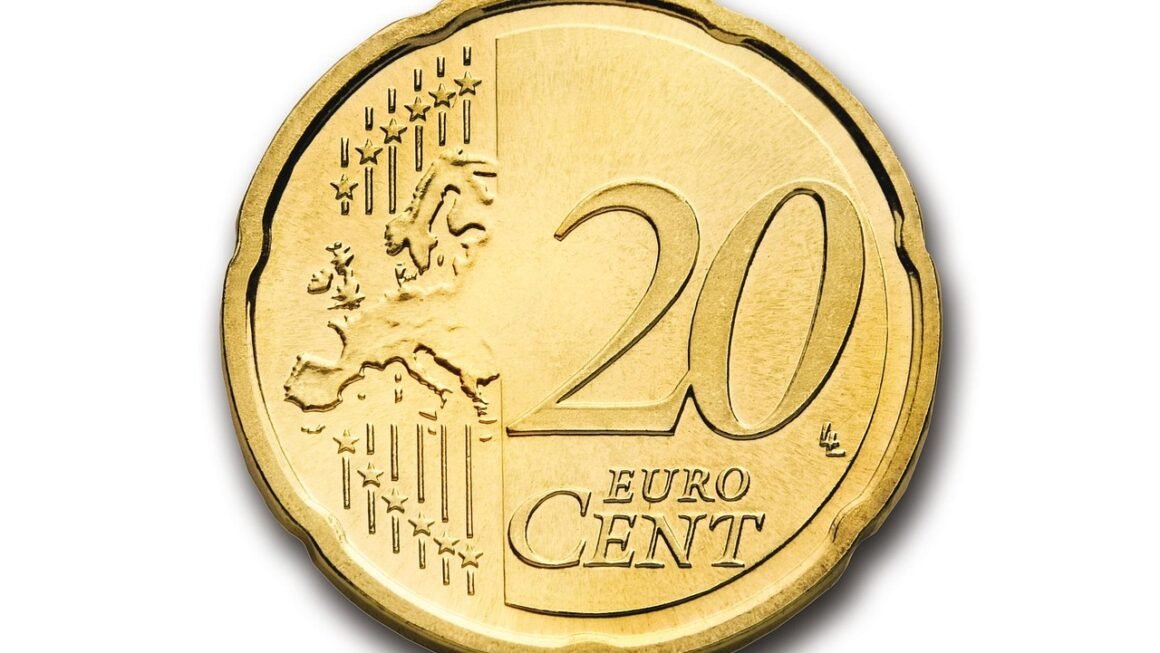Inflation – it’s a word we hear constantly in the news, a force that subtly yet powerfully impacts our wallets and the economy. Understanding inflation is crucial for making informed financial decisions, whether you’re planning your weekly grocery shop, considering a large investment, or simply trying to understand why everything seems more expensive. This article will break down inflation, explore its causes, effects, and offer practical tips for navigating an inflationary environment.
What is Inflation?
Inflation, in its simplest form, is the rate at which the general level of prices for goods and services is rising, and subsequently, purchasing power is falling. It essentially means that each dollar you have buys less than it did before. A small amount of inflation is generally considered healthy for an economy, encouraging spending and investment. However, high or uncontrolled inflation can erode savings, create economic instability, and make it difficult for businesses to plan for the future.
Measuring Inflation: CPI and PPI
The most common way to measure inflation in the United States is through the Consumer Price Index (CPI), which is released monthly by the Bureau of Labor Statistics (BLS). The CPI tracks the average change over time in the prices paid by urban consumers for a basket of goods and services, including food, housing, transportation, medical care, recreation, education, and communication.
- CPI (Consumer Price Index): Measures the changes in prices paid by consumers for a basket of goods and services. This is the most widely used indicator of inflation.
- PPI (Producer Price Index): Measures the average change over time in the selling prices received by domestic producers for their output. It can often be a leading indicator of CPI.
- Core Inflation: CPI excluding volatile food and energy prices, giving a clearer picture of underlying inflation trends.
The Producer Price Index (PPI) measures price changes from the perspective of industries that produce goods and services. While not as widely cited as the CPI, it provides insights into inflationary pressures at the wholesale level, often preceding changes in consumer prices.
Understanding the “Basket of Goods”
The CPI is based on a “basket of goods” that represents the typical spending habits of urban consumers. The BLS regularly updates this basket to reflect changing consumer preferences and purchasing patterns. The weight given to each item in the basket affects how much its price change impacts the overall CPI. For example, housing costs typically represent a significant portion of the CPI, meaning changes in rent and home prices can have a substantial impact on the overall inflation rate.
What Causes Inflation?
Inflation is a complex phenomenon with multiple potential causes, often working in tandem. Understanding these underlying drivers is key to predicting and mitigating its effects.
Demand-Pull Inflation
Demand-pull inflation occurs when there is an increase in aggregate demand for goods and services that outstrips the available supply. This can be caused by:
- Increased consumer spending: Stimulus checks, increased wages, or a surge in consumer confidence can lead to higher demand. For instance, during the COVID-19 pandemic, stimulus payments and pent-up demand after lockdowns contributed to demand-pull inflation.
- Increased government spending: Large infrastructure projects or military spending can boost demand for goods and services.
- Increased export demand: Higher demand for a country’s exports from other nations can drive up domestic production and prices.
Imagine a scenario where everyone suddenly wants to buy the latest gaming console, but the manufacturers can’t produce enough to meet the demand. The limited supply combined with high demand allows sellers to raise prices.
Cost-Push Inflation
Cost-push inflation arises when the costs of production for businesses increase, forcing them to raise prices to maintain their profit margins. Common causes include:
- Rising raw material costs: An increase in the price of oil, metals, or agricultural products can impact a wide range of industries. The Russia-Ukraine war, for instance, significantly increased energy and food prices globally, contributing to cost-push inflation.
- Rising wages: If wages increase without a corresponding increase in productivity, businesses may need to raise prices to cover the higher labor costs.
- Supply chain disruptions: Events like natural disasters, trade barriers, or geopolitical tensions can disrupt supply chains, leading to shortages and higher prices.
Consider a bakery that faces a sudden increase in the price of flour and sugar. To avoid losing money, the bakery will likely need to increase the price of its bread and pastries.
Monetary Inflation
Monetary inflation occurs when the money supply grows faster than the economy’s ability to produce goods and services. This excess liquidity can lead to higher prices as more money chases the same amount of goods.
- Central bank policies: Actions by central banks, like the Federal Reserve in the US, to lower interest rates or increase the money supply can stimulate economic activity but can also contribute to inflation if not managed carefully.
- Government debt: Large amounts of government debt can sometimes lead to monetization of the debt, where the central bank purchases government bonds, effectively increasing the money supply.
For example, if the Federal Reserve prints a large amount of new money without a corresponding increase in economic output, each dollar will be worth less, leading to inflation.
The Impact of Inflation on Your Finances
Inflation has a wide-ranging impact on personal finances, affecting everything from savings and investments to purchasing power and debt.
Eroding Purchasing Power
The most direct impact of inflation is the erosion of purchasing power. As prices rise, the same amount of money buys fewer goods and services. This disproportionately affects individuals on fixed incomes, such as retirees, whose income may not keep pace with rising prices.
- Example: If inflation is 5% and your salary remains the same, your real purchasing power has decreased by 5%.
Impact on Savings and Investments
Inflation can erode the real value of savings if the interest rate earned on those savings is lower than the inflation rate. Similarly, inflation can impact investments, affecting returns on stocks, bonds, and real estate.
- Savings Accounts: If your savings account earns 2% interest and inflation is 5%, your real return is -3%.
- Fixed-Income Investments: The real return on fixed-income investments like bonds can be diminished by inflation, especially if interest rates do not adjust to reflect rising inflation expectations.
- Stocks: Historically, stocks have often provided a hedge against inflation, as companies can raise prices to maintain profitability. However, during periods of high inflation, stock market performance can be volatile.
- Real Estate: Real estate can act as an inflation hedge, as property values and rental income tend to rise with inflation. However, higher interest rates, which often accompany inflation, can make it more expensive to purchase property.
Debt and Inflation
Inflation can benefit borrowers who have fixed-rate debt. As prices rise, the real value of the debt decreases, making it easier to repay. However, rising interest rates in response to inflation can make new borrowing more expensive.
- Example: If you have a fixed-rate mortgage, the real value of your monthly payments decreases as inflation rises.
Impact on Retirement Planning
Inflation can significantly impact retirement planning. It is crucial to factor in inflation when estimating future expenses and determining how much money you will need to save. Failing to account for inflation can lead to a shortfall in retirement savings.
- Example: If you estimate needing $1 million in retirement and inflation averages 3% per year, the real value of that $1 million will be significantly less in 20 years.
Strategies for Navigating Inflation
While you can’t control inflation, you can take steps to protect your finances and mitigate its impact.
Budgeting and Expense Tracking
Creating a budget and tracking your expenses can help you identify areas where you can cut back spending and allocate resources more efficiently.
- Track your expenses: Use budgeting apps or spreadsheets to monitor where your money is going.
- Identify non-essential expenses: Look for areas where you can reduce spending, such as dining out, entertainment, or subscriptions.
- Create a realistic budget: Set spending limits for different categories and stick to them as much as possible.
Investing for Inflation
Investing in assets that tend to perform well during inflationary periods can help preserve and grow your wealth.
- Stocks: Consider investing in companies with pricing power, which are able to pass on rising costs to consumers.
- Real Estate: Real estate can provide a hedge against inflation, as property values and rental income tend to rise with prices.
- Commodities: Investing in commodities like gold, oil, and agricultural products can provide a hedge against inflation, as their prices often rise during inflationary periods.
- Treasury Inflation-Protected Securities (TIPS): TIPS are government bonds that are indexed to inflation, protecting investors from the erosion of purchasing power.
Negotiating Salaries and Wages
Actively seeking salary increases or wage adjustments can help you keep pace with rising prices.
- Research industry standards: Use online resources to determine the average salary for your position and experience level.
- Highlight your accomplishments: Emphasize the value you bring to the company and how your contributions have benefited the organization.
- Be prepared to negotiate: Know your worth and be willing to negotiate for a higher salary or better benefits.
Minimizing Debt
Reducing debt levels can provide more financial flexibility and reduce the impact of rising interest rates.
- Prioritize debt repayment: Focus on paying down high-interest debt, such as credit card debt, as quickly as possible.
- Avoid taking on new debt: Be cautious about taking on new debt, especially if interest rates are rising.
- Consider debt consolidation: If you have multiple debts, consider consolidating them into a single loan with a lower interest rate.
Conclusion
Inflation is a complex and pervasive economic force that affects all aspects of our financial lives. By understanding the causes and effects of inflation, as well as implementing proactive strategies for managing its impact, you can protect your purchasing power, preserve your savings, and achieve your long-term financial goals. Staying informed and adaptable is key to navigating an inflationary environment successfully. Remember to regularly review your financial plan, adjust your investment strategy, and be prepared to make necessary adjustments to your spending habits to stay ahead of the curve.



